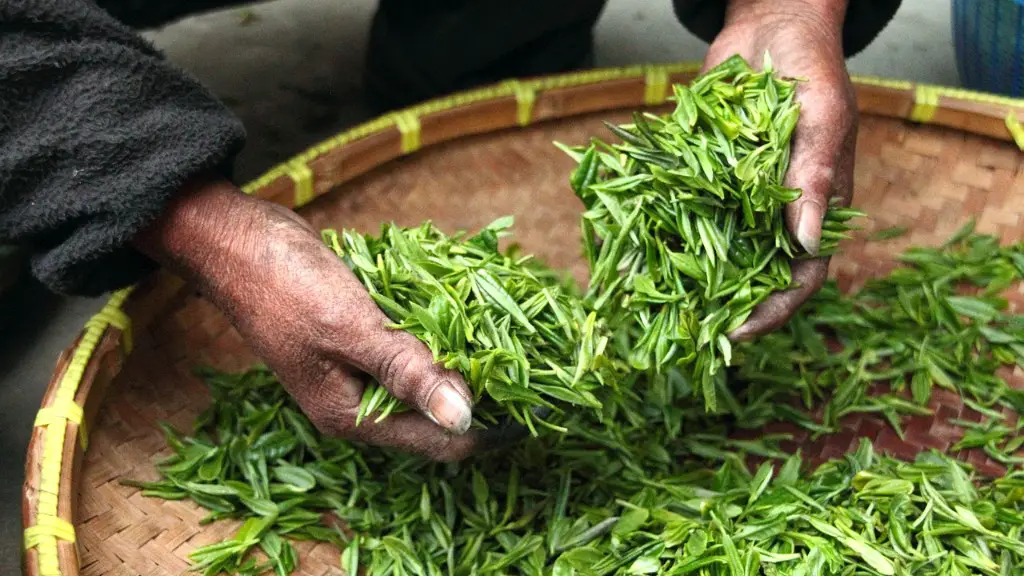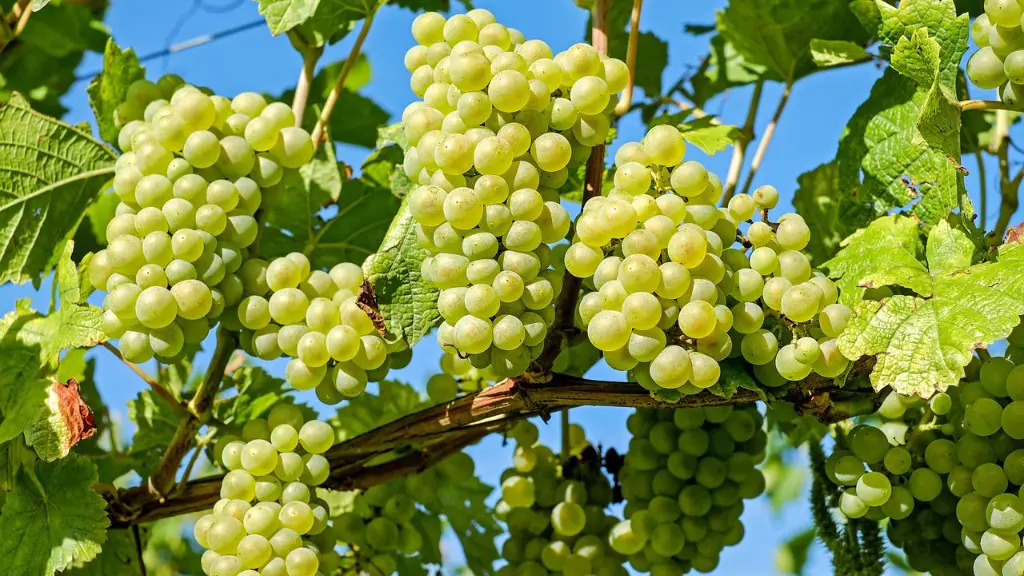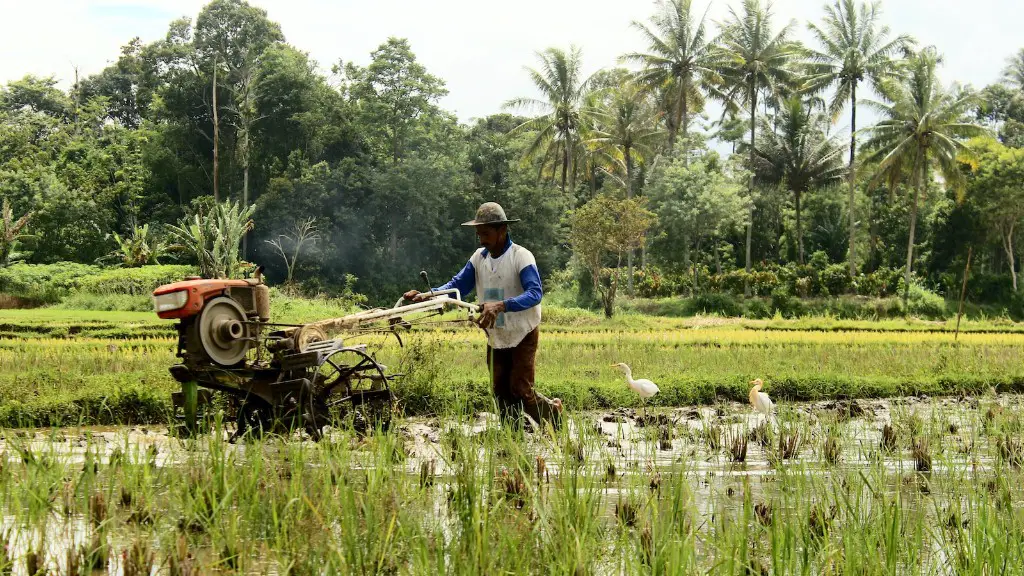Climate Resilient Agriculture (CRA) is an approach to agriculture that helps farmers adapt to and cope with the effects of a changing climate.
CRA includes a range of practices and techniques that help farmers to manage risk, reduce vulnerability and build resilience.
It is based on the principle that adaptation and mitigation are complementary and necessary for reducing the impacts of climate change on agriculture.
CRA is an important part of the solution to climate change, and can contribute to food security and poverty alleviation.
Climate resilient agriculture is a term used to describe farming and ranching practices that help producers adjust to, and recover from, the impacts of extreme weather and climate variability. Climate resilient agriculture includes a suite of production practices, such as diversification, crop rotation, and the use of cover crops, that can help farmers and ranchers build resilience to the impacts of extreme weather and climate variability.
What is the meaning of climate resilience?
Climate resilience is the ability to anticipate, prepare for, and respond to hazardous events, trends, or disturbances related to climate. Improving climate resilience involves assessing how climate change will create new, or alter current, climate-related risks, and taking steps to better cope with these risks.
There are a number of things that can be done to improve climate resilience, including:
1. Conducting a risk assessment to identify potential climate-related hazards and their potential impacts.
2. Developing a plan to address these risks, including contingency plans for responding to hazards.
3. Implementing measures to reduce the vulnerability of critical infrastructure and assets to climate-related hazards.
4. Increasing public awareness and understanding of climate risks and how to prepare for and respond to them.
5. Enhancing early warning systems and emergency response capacity to deal with climate-related hazards.
6. Investing in research and development to improve our understanding of climate risks and how to address them.
Climate smart agriculture (CSA) is a type of agriculture that aims to combat climate change. This can be done through a variety of methods, such as using more efficient irrigation systems, choosing crop varieties that are more resistant to climate change, and using more sustainable farming practices. Climate resilient agriculture (CRA) is a type of agriculture that is designed to withstand the effects of climate change. This can be done by using crops that are more resistant to drought or extreme weather, planting crops in areas that are less likely to be impacted by climate change, and using other methods to reduce the impact of climate change on agriculture.
What is resilient agriculture
Agricultural resilience is essential for the future of food production. With the world’s population expected to reach 9.7 billion by 2050, farmers and ranchers will need to be able to adapt to a changing climate and increasingly scarce resources. Agricultural resilience isn’t just about the ability of farms and ranches to cope–it is about their ability to transform. Resilient agriculture is robust and adaptable to the accumulating environmental, economic, social, and institutional challenges of today’s world.
In order to build a more resilient agriculture sector, we need to invest in research and development, support farmers and ranchers in their efforts to adopt best practices, and create policies that encourage long-term thinking and sustainability. By working together, we can build an agriculture sector that is prepared for the challenges of the future.
The program is designed to address both of these goals through a variety of initiatives, including:
-Improving soil health
-Enhancing water management
-Reducing greenhouse gas emissions
-Increasing on-farm energy efficiency
The CRF Program is a voluntary, incentive-based program that provides technical and financial assistance to farmers who are interested in implementing climate-resilient practices on their farms.
What is an example of climate-resilient crops?
The varieties of crops mentioned are all ones that have been bred to be more resistant to various environmental stresses. This includes drought, pests, and diseases. These varieties can help to improve yields and resilience in agriculture, and are thus of great importance.
Climate-resilient agriculture is a type of agriculture that is adapted to, and can withstand, the effects of a changing climate. This includes extreme weather events, shifting rainfall patterns, and changes in temperature. Climate-resilient agriculture is able to maintain or increase its benefits (such as food production, incomes, and employment) despite these changes.
There are many ways to make agriculture more climate-resilient. Some examples include using more drought-resistant crops, diversifying crop production, and increasing water-use efficiency. Climate-resilient agriculture is also often more environmentally sustainable, as it can help to reduce greenhouse gas emissions and other environmental impacts.
Making agriculture more climate-resilient is essential to feeding the world’s growing population in a changing climate.
What are the climate resilient agriculture techniques?
There are a number of practices that are being followed at the rural level in India in order to improve resilience to climate change. Some of these practices include:
1) Soil resilience: Improving soil health is key to building crop resilience under climate change. This can be done through practices such as conservation tillage and farm equipment hiring.
2) Adaptation in crop varieties: Another way of improving resilience is through the adaptation of crop varieties. This involves selecting varieties that are better suited to the changing climate conditions.
3) Water management: Water management is another important aspect of climate change resilience. This includes practices such as rainwater harvesting and efficient irrigation.
4) Conservation tillage: Conservation tillage is a practice that helps to reduce soil erosion and improve soil health.
5) Farm equipment hiring: Farm equipment hiring is a practice that helps farmers to access equipment that they may not be able to afford. This can be a useful way of improving resilience to climate change.
6) Adaptation of livestock systems: Finally, another way of building climate change resilience at the rural level is through the adaptation of livestock systems. This can involve practices such as providing shelter for livestock during extreme weather events.
Climate Smart Agriculture (CSA) is a newer approach that incorporates three specific goals: sustainably increasing productivity and income, increasing adaptation, and reducing greenhouse gas emissions below business as usual. This approach is based on the latest research and understanding of how climate change is impacting agriculture. CSA is already being implemented in many countries around the world and is having positive results.
What are 3 types of sustainable agriculture
Sustainable agriculture is the practice of farming in a way that protects the environment, is economically viable, and is socially just. There are many ways to farm sustainably, but some common methods and practices include permaculture, biodynamic farming, hydroponics and aquaponics, urban agriculture, and agroforestry. All of these approaches have the goal of creating a more sustainable and regenerative food system that benefits both the planet and its people.
Climate-smart agriculture (CSA) is an approach to help farmers to adapt and become more resilient to climate change, while also reducing greenhouse gas emissions and becoming more efficient in their use of resources.
There are a number of different ways to achieve this, but common strategies include using precision agriculture techniques to improve water and fertilizer use, planting more resilient crop varieties, and adopting agroforestry practices.
CSA is an important part of the solution to climate change, as it can help to boost food security while also reducing emissions. It is estimated that CSA could help to reduce emissions from agriculture by up to 30% by 2050.
How is CRF funded?
The Coronavirus Relief Fund (CRF) was created by the CARES Act to provide financial assistance to state, local, and tribal governments in response to the COVID-19 pandemic. City governments may apply for CRF funding through their county governments. County governments then submit an application to the Department of the Treasury, which makes the final determination of whether a city government is eligible for CRF funding. If a city government is approved for CRF funding, the county government will receive the funds from the Department of the Treasury and disburse them to the city government. CRF funding can be used to cover expenses incurred by city governments in response to the COVID-19 pandemic, including public health expenses, emergency protective measures, and lost revenue.
The ‘Green Cert’ refers to a list of land based courses which qualifies a person as a ‘trained farmer’ These could be in horticulture, agriculture, forestry or equine studies. The courses on the Green Cert are typically of a high standard and provide the student with a wide range of skills and knowledge.
What is farmers for climate action
The Farmers for Climate Solutions coalition is a national organization of farmers advocating for agricultural policies that address climate change. The coalition supports farmer-led initiatives and policies that are beneficial for farmers, people, and the planet.
Amaranth, fonio, cowpeas, and taro are all traditional crops that have been cultivated for centuries in Africa. They are all extremely drought-resistant and can withstand harsh conditions. Kernza is a newer crop that was developed specifically for the climate crisis. It is a cross between wheat and rye, and is incredibly drought-resistant.
What are examples of climate smart agriculture practices?
Climate-smart agriculture (CSA) is an approach to producing food and other agricultural products in a way that helps farmers adapt to and mitigate the effects of climate change. CSA includes a wide range of practices and technologies, such as agroforestry, intercropping, conservation agriculture, crop rotation, and integrated crop-livestock management. CSA can also help farmers improve water management, which is essential for both adapting to climate change and mitigating its effects.
Organic farming is a form of agriculture that relies on naturally occurring processes, rather than the use of synthetic inputs, to promote and maintain crop growth. Organic farmers use a variety of techniques to enhance their crops, including crop rotation, green manure, and composting.
Final Words
Climate-resilient agriculture is a type of agriculture that is able to withstand and adapt to the effects of climate change. This includes both the physical effects of climate change, such as increased temperatures and changes in precipitation, as well as the economic and social effects, such as higher food prices and disruptions to supply chains.
Climate resilient agriculture is a type of farming that can withstand extreme weather conditions brought about by climate change. It involves the use of traditional knowledge, innovations, and practices that help farmers adapt to a changing climate. Climate resilient agriculture is essential for food security in a world where the effects of climate change are increasingly being felt.





